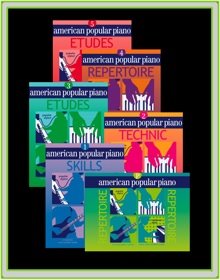
I will be putting reports and pictures on www.christophernorton.com and www.americanpopularpiano.com, so I thought
I would use this blog to make some general remarks about the young performers I saw.
First of all, the students chose their own pieces and this was a real plus. The level of understanding of the music was much better than it might have been if teachers had chosen the pieces for them. Students are always well advised to listen to the pieces before learning them - the Connections website has all of the pieces available to hear (and download) the Christopher Norton website has audio of many pieces, as does the American Popular Piano site (and of course John Michael Iverson's The Christopher Norton Project has all of APP Levels 1-5)
1. Students should be tested to see if they can keep a steady beat - I like them to both tap their foot and clap or tap at the same time. The teacher can play part of a piece while the students keep a beat for them, then the positions can be reversed. Students should be able to keep a beat going in one hand and play the other hand. The lack of a consistent beat was one of the noticeable things that needed more work.
2. Students should also remember to keep their fingers curved (imagine holding, but not gripping a softball and you'll be close to the right relaxed hand position) Too many straight fingers! Straight fingers mean less control and a much less controlled sound.
3. Have a relaxed, flexible wrist and try not to let the bottom of your wrist go below the bottom of the keys.
4. Play genuine legato in your hand, with fingers alert! In a smooth passage, feel that the weight is being transferred from the bottom of one key to the bottom of the next, via your fingers, with the weight of the arm helping (via a flexible wrist) to shape the phrases. Think through your fingertips.
5. Think like a singer when you play a melody and in fact try to sing the melody you are playing - it will often make you aware of the most natural phrasing.
6. Play a series of staccato notes with your thumb to get a feel for the bounce of the wrist that can create a nice sound and a way of playing that doesn't create tension in your arm. Once you've got that, make the same movement and sound with any of your other fingers.
7. Be able to play a piece with all the correct rhythms and phrasing (and notes of course!) before you play with a backing track. My rule is that if it's easier to play with a track, you've probably got everything else in place.
8. Start to get excited about the sound you make - and keep listening critically to every sound you produce.

That's enough for now class! Congratulations to all concerned. If you want to know more about Christopher Norton piano Festivals in your area, contact this blog or one of the websites.
CN












No comments:
Post a Comment